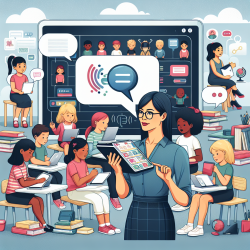As a special education director, you are always on the lookout for innovative and effective solutions to support the diverse needs of students in your district. One area that has shown promising results is online therapy, particularly for students dealing with phobic anxiety and other mental health challenges. A recent research article titled "The Mediation Effect of Phobic Anxiety on the Treatment Outcome of Activity and Participation across Age: Comparison between Online and Face-to-Face Rehabilitation Aftercare of an RCT" provides valuable insights into the effectiveness of online therapy compared to traditional face-to-face interventions.
The study, conducted by Gao et al. (2021), explored how online therapy (Internet and mobile-based interventions, or IMIs) and face-to-face (F2F) therapy impact the treatment of phobic anxiety and subsequent improvements in activity and participation among different age groups. The findings reveal several key points that can help you implement and advocate for online therapy in your school district.
Key Findings
- Both IMIs and F2F therapy effectively reduce phobic anxiety, but IMIs show a greater improvement in activity and participation, especially among younger individuals.
- Older participants benefit equally from both IMIs and F2F interventions in terms of short-term treatment changes in phobic anxiety.
- The mediation effect of phobic anxiety on activity and participation varies by age, with younger participants experiencing a stronger relationship between treatment and improvements in activity and participation.
Practical Applications
To leverage these findings in your school district, consider the following strategies:
- Integrate Online Therapy Programs: Introduce IMIs as a part of your school's mental health services, particularly for younger students who may benefit more from these interventions.
- Tailor Interventions by Age: While IMIs can be beneficial for all age groups, customize the approach to meet the specific needs of older students who might face technological barriers.
- Monitor and Evaluate: Continuously assess the effectiveness of IMIs and F2F therapies to ensure they are meeting the students' needs and adjust the programs accordingly.
Encouraging Further Research
While the study provides significant insights, it also highlights the need for further research to better understand how to optimize online therapy for different age groups and mental health conditions. Encourage your team and colleagues to stay updated with the latest research and consider participating in studies that explore innovative therapy methods.
To read the original research paper, please follow this link: The Mediation Effect of Phobic Anxiety on the Treatment Outcome of Activity and Participation across Age: Comparison between Online and Face-to-Face Rehabilitation Aftercare of an RCT.










